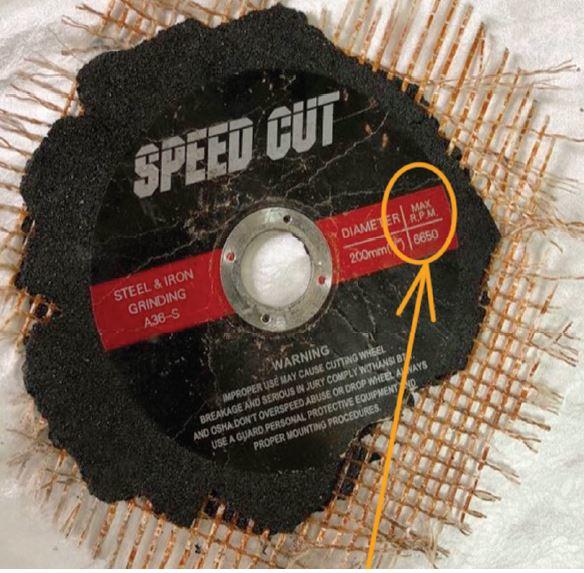201908 Grinding accident - check your RPMs
A loaded tanker was at anchor awaiting berthing instructions. During the course of the day, routine work was planned in the engine room.
One job involved cutting and grinding a dismantled galvanised 1in pipe in the workshop. A toolbox meeting was held and the angle grinders were prepared, one for cutting and one for grinding.
Once the pipe was cut, the fitter positioned the pipe in a vice to grind the cut end. Shortly after he began to work the grinding disc shattered into fragments. Although the guard was fitted, some of the fragments hit the fitter’s left hand, which was protected only by a thin glove. He sustained a deep open cut.
First aid was applied immediately and the victim was later sent ashore for treatment.
The company investigation found, among other things:
- The grinding disc was designed for a maximum of 6,650rpm, but the grinder was designed to rotate at 8,500rpm, nearly 22% faster than the permitted speed of the grinding disc.
- Before starting the job, information on the angle grinder’s design speed and the manufacturer’s instructions were not checked to verify correct use of the equipment.
- Although the grinder’s protection guard was in place, it was not at the correct angle to afford proper protection.

The disc was meant to be used at a maximum of 6,650rpm
Lessons learned
- Angle grinders should be marked with their design specifications to help crew check them easily against the discs in use
- The RPM rating of the disc or blade must be equal to or higher than that of the angle grinder
- Guards should be adjusted to deflect flying particles away from operator. The guard between the operator and the wheel should be at an angle of 180°.
- Hand protection is essential when grinding. Only robust leather gloves are acceptable.
- Cutting wheels or discs should not be used for grinding jobs, nor should grinding wheels be used for cutting jobs.
- Wheels should be used solely for the specific material and purpose for which they are designed, and always according to the manufacturer’s recommendations.
- The British Abrasives Federation recommends using abrasive discs that comply with standard EN 12413:2007+A1. The standard stipulates that discs must be marked with a date of expiry that is no more than three years after the date of manufacture.
- Wheels worn small through use should be discarded and never used on smaller machin
Editor’s note: Grinding presents several risks of severe injury to the hands, body and eyes. Some past MARS reports of grinder injuries include 201772, 201725, 201624, 201243, 200882, 200831.
